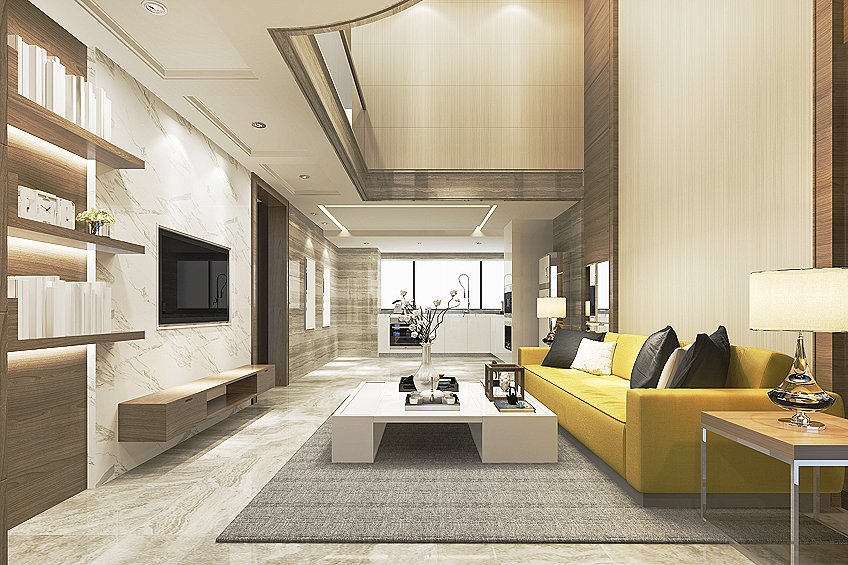Standard Ceiling Height – Elevating Spaces
This post may contain affiliate links. We may earn a small commission from purchases made through them, at no additional cost to you.
Greetings to the elevated realm of customary ceiling elevations! As we gaze upward, we often overlook one of the most fundamental aspects of architecture and interior design: the height above our heads. From the towering grandeur of historical cathedrals to the snug embrace of cozy cottages, standard ceiling heights play a pivotal role in shaping our spatial experiences. Join us on a delightful journey as we explore the highs and lows, the vertical wonders, and the skyward limits of standard ceiling heights. Get ready to elevate your understanding and reach new heights of architectural appreciation!
Table of Contents
Key Takeaways
- Ceiling height significantly impacts a home’s design and functionality.
- Standard ceiling heights are influenced by building codes and design preferences.
- Knowledge of average ceiling heights assists in creating comfortable living spaces.

Why Does Ceiling Height Matter?
The architectural element of a room that often goes unnoticed but significantly influences its aesthetics and practicality is the ceiling height. Standard ceiling height plays a crucial role not just in design but also in providing a sense of space and comfort. Conventionally, residential spaces follow a norm for ceiling height to balance spaciousness with energy efficiency and cost-effectiveness. Different ceiling types, such as flat, tray, and vaulted, can affect the perception and function of interior spaces. Understanding the implications of ceiling height is essential for both homeowners and builders. It factors into the overall appeal of a space and can influence property value. Furthermore, building codes often dictate minimum requirements to ensure safety and livability.
The industry standard ceiling height has evolved over time, reflecting changes in design trends, building techniques, and consumer preferences.
Ceiling height is a significant factor in home design because it influences both the functionality and aesthetic appeal of a space. Homes are now commonly built with nine-foot ceilings, stepping up from the eight-foot standard of the past. This change caters to a preference for more open and spacious interiors. A higher ceiling can enhance the sense of spaciousness and grandeur in a room, making it feel more luxurious and open. In contrast, lower ceilings can create an atmosphere that feels cozy and intimate, which may be desirable in certain settings like bedrooms or cottages. Furniture and decor are other aspects impacted by ceiling height. Taller ceilings can accommodate larger furniture pieces, such as wardrobes or bookshelves, without the room feeling cramped. Moreover, additional space allows for creative design elements like ceiling fans or statement lighting.

The height of a ceiling can also affect a room’s lighting. More vertical space usually means better potential for natural light distribution during the day, especially when complemented with tall windows or skylights. In terms of artificial lighting, higher ceilings offer more options for placement and types of light fixtures. Heating and cooling are practical considerations linked to ceiling height; higher ceilings result in larger room volumes, which can influence the costs associated with maintaining comfortable temperatures. It’s important to consider these long-term costs when designing or choosing a home with higher-than-standard ceilings.
Standard Ceiling Heights in Residential Design
In residential design, standard ceiling heights are influenced by historical precedents, building codes, room function, and design considerations that affect both comfort and space.
Historical Evolution and Building Codes
Historically, traditional ceiling heights were often around eight feet, conforming to the dimensions of materials available in the post-war era. The minimum ceiling height is now regulated by the International Residential Code (IRC). for habitable spaces is seven feet. This standard has evolved over time to accommodate advancements in building techniques and materials, and to ensure safety, comfort, and functionality.

Variations Across Room Types
- Kitchens: A minimum ceiling height of 7 feet, 6 inches is recommended for comfort and functionality.
- Living rooms, dining rooms, and bedrooms: These spaces often follow the nine-foot standard for a sense of openness.
- Bathrooms and laundry rooms: Typically range from seven to nine feet.
- Basements and attics: These non-habitable spaces can have varied ceiling heights, with basements sometimes going to eight to nine feet if finished.
Influences on Design and Functionality
Ceilings enhance interior design through variations such as flat, vaulted, cathedral, coffered, and tray ceilings. Vaulted and cathedral ceilings can create a sense of grandeur and spaciousness, while coffered ceilings add depth and architectural interest. High ceilings offer a feeling of luxury and openness, while lower ceilings can evoke coziness and warmth. Ceiling height affects lighting, ventilation, and energy usage, thereby influencing heating and cooling costs.

Considerations for Comfort and Space
Architects and engineers factor in the room’s purpose, available space, and the desired aesthetic to determine the ideal ceiling height. A balance between spaciousness and comfort is sought to achieve both aesthetic and functional needs.
Good design considers how ceiling height impacts the atmosphere of a room, from the sense of openness in a living room to the intimate feel of a cozy study.
Enhancing the Perception of Ceiling Heights
When redesigning interior spaces, the perceived height of ceilings can drastically influence the ambiance and functionality of the room. Strategic use of decor and structural modifications can create the illusion of higher or more spacious ceilings, optimizing them for both aesthetics and energy efficiency.

Decorative Elements and Illusions
Incorporating vertical lines through elements such as striped wallpaper or tall mirrors can make ceilings appear higher. Furniture that is lower to the ground enhances the vertical space, adding to the illusion. Additionally, light fixtures and ceiling fans should be chosen with the ceiling height in mind to ensure they complement the space without overwhelming it.
Structural and Renovation Considerations
Architectural styles dictate the feasibility of certain structural changes. For instance, vaulted, coffered, or tray ceilings can add depth and dimension. These styles, often found in homes with 9-foot ceilings or higher, not only alter appearance but can also impact acoustics and lighting. During renovation, considerations for plumbing, wiring, and HVAC systems are essential as they require sufficient space. Converted basements or non-habitable spaces should adhere to a minimum ceiling height for safety and comfort.

Optimizing for Energy Efficiency and Lighting
Energy considerations are crucial for ceilings of all heights. High ceilings may require more heating, hence, insulation is key in energy efficiency. For lighting, installing several layers of light, such as ambient, task, and accent, can enhance the sense of height and space. Ceiling fans help in maintaining a uniform temperature across varied ceiling heights.
The minimum height for habitability should not compromise the ventilation and lighting of the space.
Tips for Measuring Ceiling Height
Measuring ceiling height accurately is essential for home renovation, decoration, and ensuring compliance with building codes. Proper measurement techniques can address the challenges of high ceilings and optimize the appearance of low ceilings.

High Ceiling Challenges
To measure a high ceiling, one might need a ladder and a long tape measure. Safety is paramount when working at heights, and it’s advised to have an assistant hold the ladder steady. Begin by measuring from the floor to a reachable height, then mark this point temporarily.
Repeat the process, stacking measurements until reaching the ceiling.
Ensure that each measurement is level and write them down to add together for the total height. For rooms with vault ceilings or other irregular shapes, special attention is needed. In these cases, measure the highest point for peak ceiling height and the lowest point for minimum ceiling height to understand the space’s variance.
Low Ceiling Enhancements
Low ceiling measurements can be simpler, often requiring just a standard tape measure without the need for a ladder. To make a low ceiling appear taller, here are some techniques:
- Color: Use light colors for paint or wallpaper to create an illusion of height.
- Lighting: Install recessed or flush-mount lighting fixtures to keep the ceiling uncluttered.
- Vertical lines: Integrate vertical design elements like stripes to draw the eye upward.
Measuring from floor to ceiling at the room’s corners can ensure accuracy as walls may be more plumb there. If there are discrepancies, average the measurements to determine the effective ceiling height. This approach helps in planning enhancements to optimize the appearance of the space.

As we wrap up our exploration of standard ceiling heights, let’s take a moment to look down from the heights we’ve reached. From the whimsical charm of low ceilings to the airy expansiveness of lofty spaces, standard ceiling heights truly define the character and functionality of our built environments. Remember, whether you’re reaching for the stars or cozying up to earth, the height above matters more than we often realize. So, let’s continue to marvel at the architectural wonders above us and appreciate the heights that shape our lives below. Here’s to reaching new heights, one ceiling at a time!
Frequently Asked Questions
How Does Ceiling Height Affect Building Costs and Aesthetic Appeal?
Ceiling height can significantly influence both the financial aspects of construction and the visual character of a space. Higher ceilings require more materials and can lead to increased heating costs, impacting the overall building expenses. Aesthetically, they offer a sense of grandeur and space, potentially increasing a home’s appeal and value.
What Are the Benefits of Choosing a Higher Ceiling Height in Living Spaces?
Higher ceilings in living spaces enhance the room’s volume, promoting better air circulation and natural light distribution. They can also contribute to a more luxurious and spacious atmosphere, which can improve the living experience and may increase the property’s marketability.
Robert Thompson has worked as a self-employed carpenter for over 15 years. He lives with his family in Billings, Montana, where he also successfully operates his business as a woodworker. His main business is the complete interior construction of buildings. He is also passionate about creating high-quality wood furniture with epoxy and other items made from burl wood. Besides the woodwork, Robert is also a skilled DIY professional for all kinds of materials. He always has a solution ready for every craft and construction challenge. Originally, Robert studied civil engineering and has advanced degrees in carpentry and business management. Robert has been working for Craft Art since 2020 and enriches the blog with his immense knowledge and skills in the field of woodworking and home improvement. He writes the articles about DIY and Repair.
Learn more about Robert Thompson and about us.









